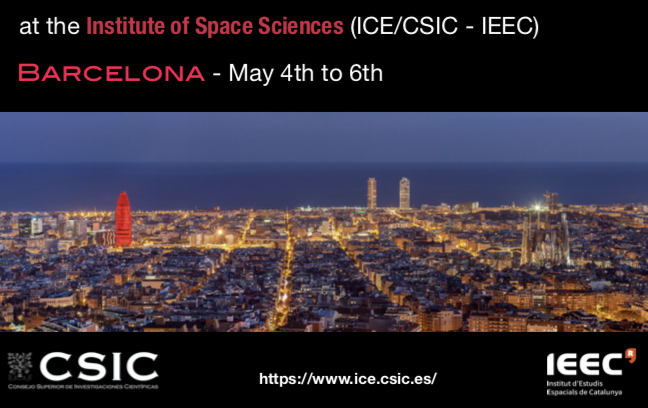Speaker
Description
Type Ia supernovae (SNe Ia) are useful distance indicators in cosmology, provided their luminosity is standardized by applying empirical corrections based on light-curve properties. One factor motivating these corrections is dust extinction, accounted for in the beta color-luminosity relation of the standardization. As the role of dust in both supernova and extra-galactic astronomy is still poorly understood, this $\beta$ relation is assumed to be universal, which can introduce systematics into the standardization. The mass-step'' observed for SNe Ia Hubble residuals has been suggested as one such systematic. In this work we seek a more complete view of dust attenuation properties for a sample of 162 SN Ia host galaxies and to ascertain whether themass-step'' is linked to these same properties. We propose an alternative approach to infer dust attenuation laws towards host galaxies, from both global and local (4 kpc) Dark Energy Survey photometry. Simple Stellar Population models are fitted to this photometry and used to map dust properties. We find a relation between the attenuation slope and the optical depth, best explained by varying star/dust geometry with galaxy orientation. This relation is shown to be very different from the extinction slope/optical depth relation found directly for SNe. Analyzing the Tripp standardization, we find evidence for a two dimensional dust-step'', which, although comparable to themass-step'', is not completely analogous to it. We study an alternative SNe Ia standardization, in which the extinction contribution to the color-luminosity correction is fixed using the previously obtained host attenuation. This proves a worse fit of the data, exacerbating the mass-step''. We conclude that dust properties vary greatly across different galaxies, meaning a universal $R_V=3.1$ or a universal SN Ia correction cannot be assumed. We also conclude that themass-step'' cannot be fully accounted for using host galaxy dust data, either using an alternative SN standardization with extinction approximated by host attenuation or a ``dust-step'' approach.

